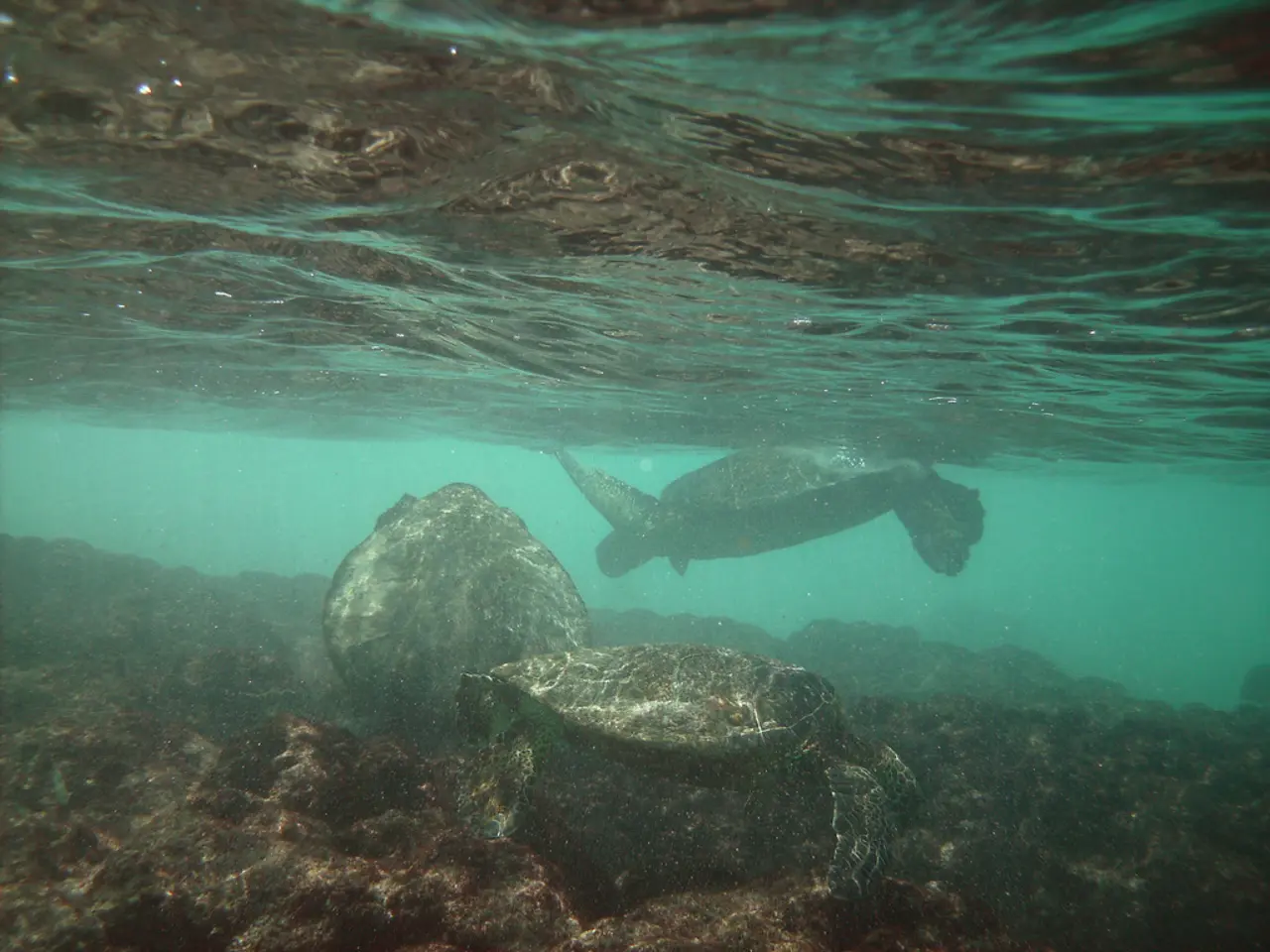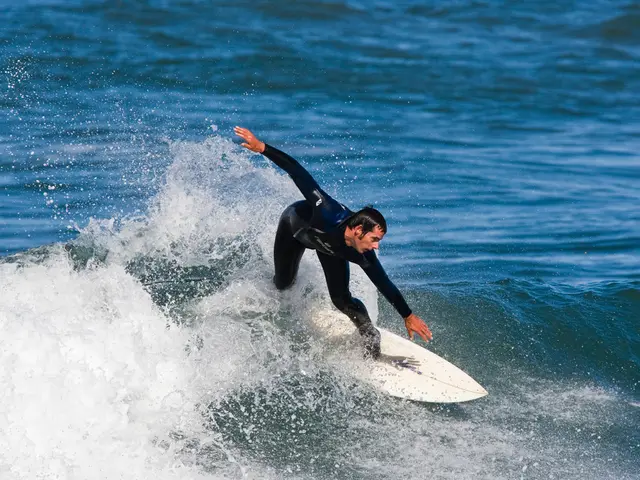Traffic Halts on Coast Due to Turtle Nesting Sites: Managing Tourism and Turtle Conservation
Coastal communities around the world are striking a balance between tourism and the protection of sea turtles. This delicate dance involves blending old wisdom with new science to safeguard these ancient creatures that have roamed the oceans for over 100 million years.
Tourism, while bringing much-needed income to remote regions, funding schools, clinics, and infrastructure, can negatively affect sea turtle nesting. The key negative effects include disorientation of hatchlings due to artificial lights, habitat degradation from unregulated development and beach overcrowding, pollution, and physical disturbances, and stress and displacement caused by overcrowding and excessive human contact.
However, responsible tourism practices can help preserve sea turtle habitats and support their conservation. These include implementing shading or light management, limiting tour group sizes, enforcing no-touch and minimum distance rules during turtle nesting observation and hatching events, developing eco-tourism activities focused on turtle conservation, engaging in habitat restoration and cleanup efforts, continuous monitoring and nest protection by conservation teams, and collaboration with local communities and environmental experts.
Examples of responsible tourism can be found in places like the Con Dao National Park in Vietnam and the Ras Al Jinz Turtle Reserve. These destinations combine in-site protection, scientific research, cooperation, and strict eco-tourism guidelines to protect sea turtles while educating visitors.
The journey of sea turtles to nesting sites is perilous, with threats including sharks, fishing nets, and powerful currents. Destinations famous for turtle nesting, like Costa Rica's Tortuguero, Florida's Atlantic coast, and Australia's Mon Repos, are both sanctuaries and battlegrounds. Education is a powerful tool in this balancing act, with understanding the journey and vulnerability of sea turtles leading to changes in visitor behavior.
Eco-friendly tours led by trained guides are available for those eager to witness turtle nesting without causing harm. Travelers can make a positive impact during turtle nesting by keeping a respectful distance, avoiding flash photography, and staying quiet. The temperature of the sand during nesting determines the sex of hatchlings, with warmer sands producing females and cooler sands producing males. A quiet, dark beach is essential for successful sea turtle nesting, but this requirement often clashes with tourist hotspots.
Balancing economic growth with ecological preservation is a delicate dance, with communities finding innovative ways to share the sands, sometimes through rotating beach access or sustainable tourism models. Choosing accommodations that support conservation or participate in local nesting patrols is another way for travelers to give back.
Tourism brings energy and economic opportunities to coastal communities, but it can create challenges for sea turtles due to increased foot traffic, artificial lighting, and bustling beachfront activities. Female sea turtles return to the beaches where they were born to lay their eggs, a process known as natal homing. "Turtle-friendly" lighting is effective in reducing confusion for hatchlings, with special bulbs emitting wavelengths less visible to turtles. Bright lights can confuse hatchlings, drawing them away from the ocean and toward danger.
The next generation of tourists may be the most turtle-friendly yet, as a new wave of "turtle ambassadors" spreads the word and protects the beaches they love. By making conscious choices and supporting responsible tourism, we can ensure the survival of these magnificent creatures and their habitats for future generations.
- The implementation of "turtle-friendly" lighting around coastal areas can help reduce the confusion for hatchlings, ensuring their safe journey towards the ocean.
- By choosing accommodations that support conservation or participate in local natal homing patrols, travelers can contribute significantly to the conservation of sea turtles.
- In the realm of environmental science, the study of sea turtles and their habitats can provide insights for sustainable lifestyle practices, particularly in balancing energy consumption with the preservation of the environment.




